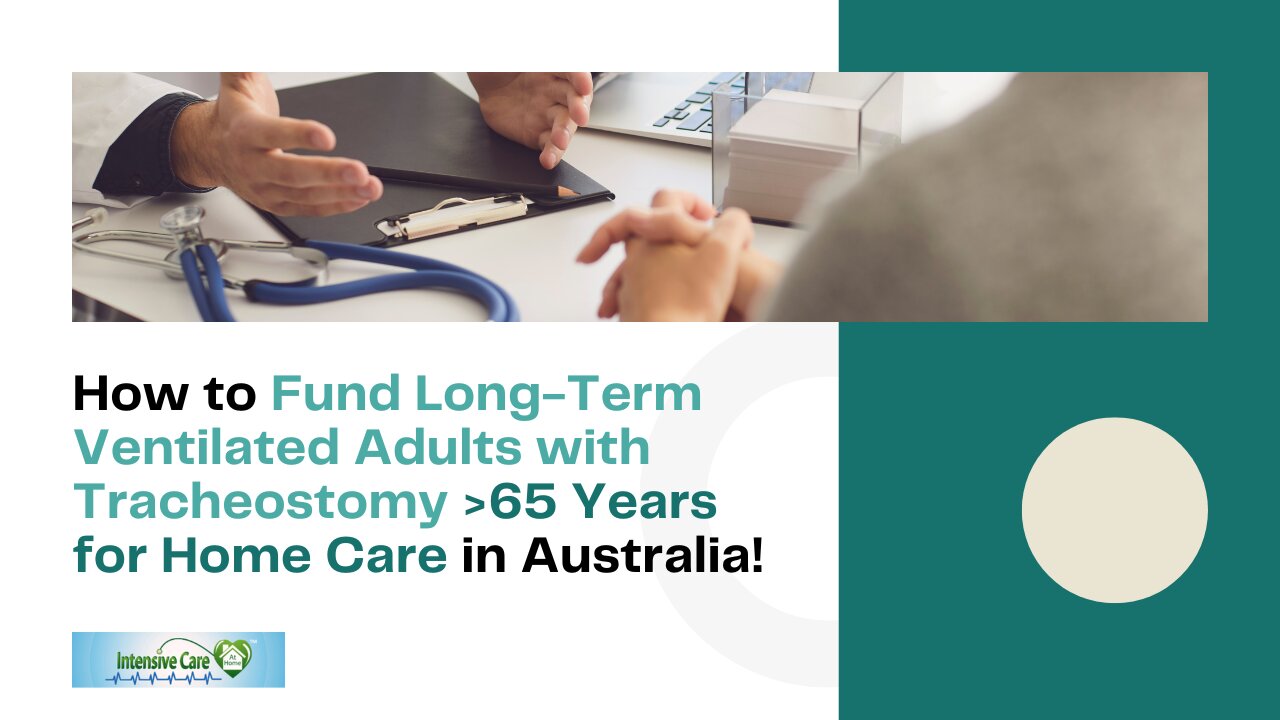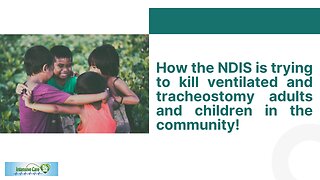Premium Only Content

How to Fund Long-Term Ventilated Adults with Tracheostomy 65 Years Up for Home Care in Australia!
How to Fund Long-Term Ventilated Adults with Tracheostomy 65 Years Up for Home Care in Australia!
Book your free 15-minute phone consultation here
http://intensivecarehotline.com/scheduling-appointment/
Call directly 24/7
+1 415-915-0090 USA/Canada
+44 118 324 3018 UK
+6141 094 2230 Australia
Email support@intensivecarehotline.com
Get 1:1 consulting and advocacy
1:1 phone counselling
http://intensivecarehotline.com/one-on-one-counselling/
Become a member for families of critically ill Patients in Intensive Care
https://intensivecarehotline.com/intensivecaresupport-org-membership/
Immediate action steps http://intensivecarehotline.com/take-control-take-charge/immediate-action-steps/
https://intensivecareathome.com
And if you need a medical record review, click on the link and we can help you with reviewing your loved one’s medical records while they’re in ICU.
https://intensivecarehotline.thrivecart.com/review-of-medical-records/
Facebook Page: https://www.facebook.com/ICUhotline
Twitter: https://twitter.com/icuhotline
Song: Jarico - Island Music
supported by@FreeBackgroundMusicForCreators
#BackgroundMusicWithoutLimitations
https://bit.ly/2XoXFnb
#icu
#intensivecare
#criticalcare
Hi, it’s Patrik Hutzel from intensivecareathome.com where we provide tailor-made solutions for long-term ventilated adults and children with tracheostomies at home and where we also provide tailor-made solutions for hospitals and intensive care units at home whilst providing quality care for long-term ventilated adults and children with tracheostomies at home. We also provide nursing care at home to otherwise medically complex adults and children at home including Home BIPAP (Bilevel Positive Airway Pressure), Home CPAP (Continuous Positive Airway Pressure), home tracheostomy care when adults and children are not ventilated, also Home TPN (Total Parenteral Nutrition), home IV potassium infusions, home IV magnesium infusions as well as home IV antibiotic infusions. We also provide port management, central line management, PICC (Peripherally Inserted Central Catheter) line management, Hickman’s line management as well as palliative care at home, that also includes ventilation weaning.
We’re also providing our critical care nurses for home care to avoid emergency department readmissions. So besides keeping ICU beds empty, we also keep emergency department beds empty by sending our critical care nurses into the home for (Percutaneous Endoscopic Gastrostomy) tube changes, nasogastric tube changes, tracheostomy tube changes, catheter changes, even cast changes and other things to keep emergency departments empty and keep people at home.
So today, I actually want to talk about a systemic issue when it comes to long-term ventilation and tracheostomy and the interface of NDIS (National Disability Insurance Scheme) hospital care (aged care). It’s something that needs to be addressed on a systemic issue. So, it’s great that most of our clients nowadays are funded through the NDIS, that is a fantastic thing. Whilst the NDIS still has a long way to go and it’s not perfect by any means, I’ve been criticizing the NDIS on my videos as well, there is some funding for most clients now, so that’s the good news. By doing so, the NDIS is clearly keeping ICU beds empty and is taking the pressure off the healthcare system by using services like our service, evidence-based services that are third party accredited for Intensive Care at Home nursing.
Now, the NDIS has a cut off at the age of 65. If someone gets on the scheme before the age of 65, it’ll continue after the age of 65. But the problem here is that there’s patients in ICU that are above the age of 65, that are in a similar situation than many NDIS participants. They have a health condition, they have a disability that confines them to a ventilator and a tracheostomy, or a ventilator without a tracheostomy, or a tracheostomy without a ventilator, or they might need home TPN, or they might need IV potassium infusions at home, IV magnesium infusions at home, they might need central line care at home, Hickman’s line care at home, port management at home, and central line management at home.
So, those issues are not going away because the NDIS is cutting off at the age of 65. The problem here is that those patients stuck in ICU and in hospitals for a long time, taking up a lot of money, taking up a lot of resources and blocking a bed that can be used for someone that needs critical care and needs an ICU bed.
Continue reading at: https://intensivecareathome.com/how-to-fund-long-term-ventilated-adults-with-tracheostomy-65-years-for-home-care-in-australia/
-
 14:20
14:20
Intensive Care at Home
20 days agoHow the NDIS is Trying to Kill Ventilated and Tracheostomy Adults and Children in the Community!
61 -
 LIVE
LIVE
Delnorin Games
4 hours ago🔴 Live - Star Citizen
280 watching -
 1:39:44
1:39:44
HELMET FIRE
5 hours agoDEADROP IS BACK!
82.6K6 -
 10:03
10:03
Tundra Tactical
7 hours ago $8.50 earnedBrandon Herrera Vies Bid for ATF Director!
45.9K8 -
 22:01
22:01
DeVory Darkins
1 day ago $26.58 earnedHakeem Jeffries SHUTS DOWN The View as Matt Gaetz Speaks out
43.9K95 -
 2:02:54
2:02:54
Mally_Mouse
6 hours agoLet's Play!! - Spicy Saturday
30.1K -
 1:33:06
1:33:06
Slightly Offensive
7 hours ago $20.08 earnedAre You Ready for What's Coming Next? | Just Chatting Chill Stream
48.2K32 -
 32:10
32:10
MYLUNCHBREAK CHANNEL PAGE
1 day agoThe Gate of All Nations
125K54 -
 13:07
13:07
Sideserf Cake Studio
11 hours ago $1.88 earnedIS THIS THE MOST REALISTIC SUSHI CAKE EVER MADE?
46.9K3 -
 21:08
21:08
Clownfish TV
1 day agoElon Musk Tells WotC to BURN IN HELL for Erasing Gary Gygax from DnD!
36.4K13